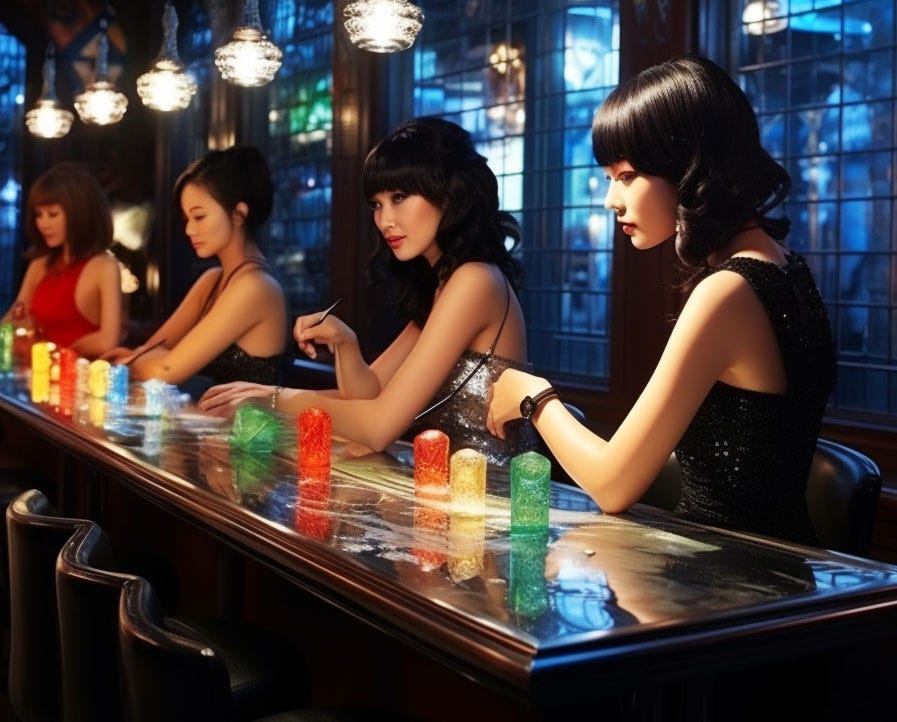Apple Park: The History Behind Apple’s $5 Billion Headquarters
Technology firms have engineered incredible growth in the past decade — and they’ve left their mark on urban landscapes by building enormous campuses. A recent example of this can be seen in Apple’s new five billion dollar headquarters located in Cupertino, California.
What looks like a giant spaceship parked up in the middle of suburban America, is actually Apple’s most ambitious project yet and is truly something to behold. Apple Park’s stunning architecture extends across one hundred and seventy five acres of land and serves as an iconic symbol of Apple’s dedication to design, green energy, and the future of technology.
Despite Apple Park’s incredibly futuristic looks, the campus has been a long time in the making with Steve Jobs himself first presenting the ambitious project to the Cupertino City Council back in 2006.
Jobs saw the rapid growth of the company and knew that their current campus at 1 Infinite Loop couldn’t last. So, Apple purchased land formerly owned by Hewlett-Packard; a company very important to Jobs’ history as he worked there as a summer intern.
Purchases of the required land were made through the company Hines Interests, which in at least some cases didn’t disclose that Apple was the ultimate buyer. This is common practice in attempts to arrange the purchase of contiguous land made up of multiple parcels with separate owners, to keep costs from skyrocketing. This was similar to the approach that Disney took in the mid-1960s when they set out to build their Magic Kingdom in Florida.
On June 7, 2011, Jobs presented to the Cupertino City Council, in what is widely known to be one of his final public appearances, details of the architectural design of the new buildings and their surroundings.
Many of Apple’s initial goals were met within this first presentation of the campus, but subsequent delays and spiraling costs meant that Jobs sadly never got to realize the final product as he passed away only a few months after that meeting.
On October 15, 2013, Cupertino City Council unanimously approved Apple’s plans for the new campus after a six-hour debate. Shortly thereafter, demolition work began to prepare the site for construction.
Apple began the initial tear-down of the old Hewlett-Packard buildings and broke ground in March 2014. The project took a little over three years to get finalized and ready for employees to move-in.
Throughout construction, Apple received criticism for the perceived extravagance of its new headquarters, as well as its perfectionist approach to its design and construction. The use of special wood as a construction material was reported to be the subject of a thirty-page document. The design of door handles was reported to be the subject of a one and a half year debate, involving several revisions and prototypes before Apple Executives gave their final approval. Apple’s desire for custom signage also put the company at odds with the Santa Clara County Fire Department, requiring several rounds of negotiations due to fears it could compromise safety in case of emergencies.
Despite many setbacks, The campus successfully opened to employees in April 2017. Construction work ongoing.
Apple Park integrates seamlessly with nature, with over eighty percent of the one hundred and seventy five acre site consisting of green space planted with nine thousand drought-resistant trees and plants indigenous to the Cupertino area, including oak, apricot, plum, cherry, persimmon, and of course, a few varieties of Apple. The center courtyard of the main building also features an artificial pond.
To encourage employees to maintain a healthy lifestyle, Apple Park boasts a huge one hundred thousand square foot fitness center, over two miles of walking and running trails, and one thousand bikes for staff to get around the campus. Other health and wellbeing facilities include a two-story yoga studio and a couple of basketball courts.
Apple Park is one of the most energy-efficient buildings in the world. The main ring construction is home to one of the world’s largest rooftop solar farms, generating up to seventeen megawatts of power which is enough to meet seventy-five percent of the campuses’ energy demand during peak hours. The other four megawatts are generated onsite using Bloom Energy Server fuel cells, which are powered by biofuel or natural gas. In addition to its solar-coated roof, the ring also uses natural ventilation as much as possible. Needing no heating or cooling for nine months out of the year.
The nature of the ring-shaped building conceals immense expertise and innovation. It comprises of a few core elements: communal ‘pod’ spaces for collaboration, private office spaces for concentrated work, and broad, glazed perimeter walkways.
Steve Jobs himself wanted no seams, gaps, or paint brush strokes visible for a clean fit and finish. To achieve this, the massive building has eight hundred, forty five foot tall curved glass sheets that fit seamlessly around the four-story structure, the largest sheets of this kind ever constructed — allowing for an uninterrupted connection to the landscape.
The ring also features wide-open spaces that can be collapsed into smaller sections when needed. This level of configurability is just one of the many ideas brought forward by former Apple design chief, Jony Ive.
Before he departed the company in 2019, Ive took time away from leading the design team to work closely with architect Norman Foster on Apple Park. His product design influences can be seen throughout the new campus, from the elevator buttons to the stairwells.
Much of California sits on the San Andreas Fault line, rendering the area extremely susceptible to earthquakes. Apple Park is one of the few buildings in the United States to utilize a sophisticated base isolation system to protect itself from even the worst California earthquakes. The system consists of six hundred and ninety two huge stainless steel plates buried two stories underground which allow the building to shift up to four feet in any given direction without causing any structural damage. Also concealed underground is a network of roads, offices, and parking spaces to maximize the green space in and around the park.
Also located within the park grounds, atop a hill, you’ll find a one thousand seat auditorium intended for Apple product launches and press meets. Officially known as the Steve Jobs Theater, this one hundred and sixty five foot diameter circular glass building has no visible supports and the largest carbon fiber roof in the world. The theatre also includes a forty two foot high glass elevator that rotates one hundred and seventy one degrees from the bottom to the upper lobby level. The elevator is made from chemically-tempered glass and is considered to be the tallest free-standing, glass elevator in the world.
In 2018, the Steve Jobs Theatre won a “Structural Artistry” award from the U.K.-based Institute of Structural Engineers, given to buildings that have been “transformed by the vision and skill of the structural engineer into something exceptional.”
Other buildings dotted around the park include two, three hundred thousand square foot research and development facilities, a care clinic, and a visitors center which happens to be the only building in the entire park that guests can visit without an employee badge.
The Apple Park Visitor’s Center is all under one roof and is divided into four very unique sections. A ten thousand square foot Apple Store filled with the latest apple products and exclusive merchandise, a two thousand square foot cafe, an observation deck, and an area for an augmented reality experience.
Steve Jobs had a vision to build the best office building in the world, a home of innovation for generations to come, and there’s no doubt that Apple Park’s stunning architecture and intuitive design certainly fits the bill.





